(873 products available)
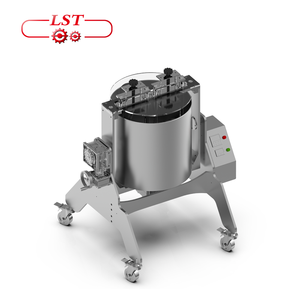
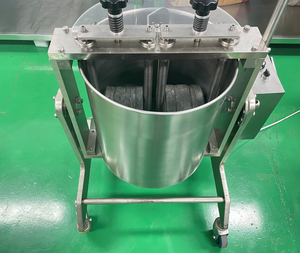
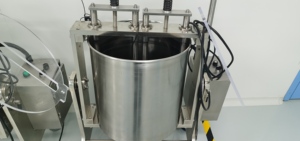
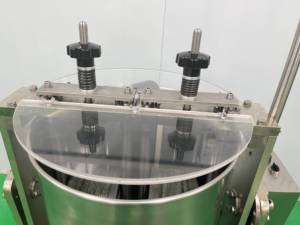
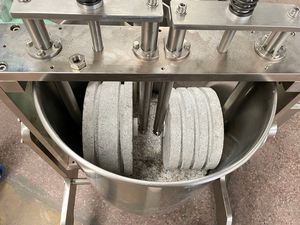
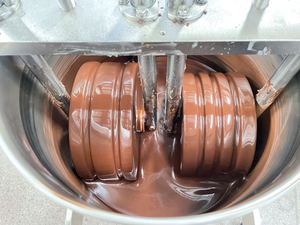





















































































































































































Market Overview: The global market for cocoa nibs grinding machines is part of the broader industrial food milling machines segment, which was valued at approximately USD 150.22 million in 2023 and is projected to reach USD 216.53 million by 2030, reflecting a CAGR of 5.36% during this period. This growth is indicative of rising consumer demand for high-quality cocoa products, driven by the booming chocolate industry. As cocoa production continues to expand—expected to exceed 4.5 million tons in the 2023/2024 crop year—there is a corresponding need for efficient processing equipment. Major cocoa-producing regions, particularly in Africa, are increasingly investing in advanced machinery to enhance their production capabilities and meet international quality standards, according to Statista.
Industry Insights: The increasing popularity of artisanal and craft chocolate has shifted consumer behavior towards premium cocoa products, subsequently driving the demand for specialized equipment like cocoa nibs grinding machines. As manufacturers seek to optimize their production processes, the focus has shifted to machines that offer precision, efficiency, and scalability. Major players in the industry are responding to these trends by innovating their offerings and improving machine capabilities, which enhances market competitiveness. Furthermore, with the rise of e-commerce and direct-to-consumer sales channels, cocoa processors are prioritizing investments in machinery that can accommodate smaller batch sizes while maintaining high quality. This evolving landscape presents significant opportunities for manufacturers of cocoa nibs grinding machines to capture niche markets and expand their customer base.
The cocoa nibs grinding machine aims to extract cocoa liquor from cocoa nibs. Nibs contain about 54% fat, known as cocoa butter, and approximately 46% cocoa solids. The first stage involves breaking the structure of the nibs into smaller particles to release the cocoa butter. Several grinding processes are required to achieve this.
There are five main types of grinders used in the cocoa nib grinding industry.
Mortar and pestle
The mortar and pestle are the earliest chocolate grinders ever made. Today, many people still use the method in their homes to grind coffee beans. The part consists of a large bowl called the mortar and a handheld tool called the pestle. The pestle used to grind cocoa nibs is larger and heavier than standard pestles. Users place the nibs in the mortar and manually hit them with the pestle to break them into smaller pieces. The cocoa butter is released in the process. However, this method is tedious, old-fashioned, and time-consuming. It hardly fits the modern cocoa product-making industry that requires fast production.
Hammer mill
A hammer mill comes closer to the needs of mass cocoa production. It consists of a rotating disc with hammers attached. The disc rotates at high speed, throwing the hammers against the cocoa nibs. The hammers strike and crush the nibs into smaller pieces. The MDCG-3 hammer grinder machine offers business buyers a three-in-one grinder for cocoa nibs, peanuts, and walnuts. The grinding power is 80-200 kg/h, and it uses 3kw of power with a voltage of 380v.
Colloid mill
This advanced cocoa nibs grinder takes the grinding process a bit further. It reduces cocoa nibs to extremely fine particles. Cocoa butter is released in large quantities, and the resulting cocoa paste is uniform. Colloid mills use high shear force to break cocoa nibs. They achieve even finer particle sizes than hammer mills. An example is the 5 in 1 New Technology Cocoa Butter Grinder Colloidal Mill. It has a production capacity of 200-300 kg/h. It is suitable for grinding vegetables, fruit, nut, and cocoa butters.
Steel rollers
These machines crush cocoa nibs between rollers. They achieve high production capacities and are commonly found in large-scale chocolate production facilities. An example is the 2-Roller Chocolate Refiner and Cocoa Grinder Machine. It has a beefy 15 hp and a production capacity of 1,000-1,200 kg/h. It is suitable for large chocolate production companies that need to process a large quantity of cocoa daily.
Cocoa nib grinding machines' specifications will vary depending on the type, model, and manufacture. However, the following are some general specifications that have been found when researching the cacao grinding machine.
When it comes to the maintenance of the cocoa nib grinding machine, it is essential that routine checks and cleaning are done to ensure the machines work optimally and to extend their lifespan. With that being said, here are a few maintenance tips:
Cocoa nib grinding machines have various applications in the food processing industry. Overall, these machines are useful for artisanal and industrial chocolate makers who want to create highly desirable products. Consumers are willing to pay more for better-quality chocolate that has been carefully made with premium ingredients.
These machines help extract cocoa butter, which chocolate manufacturers can use when making their products. The nib grinding machine also produces chocolate liquor, which is an essential ingredient when making dark chocolate. Chocolatemakers will usually use the coffee grinder machine to realize specific flavor notes that will add value to their chocolate brand.
The machines also help break cocoa powder and cocoa butter to be used in high-demand products such as chocolate, cakes, brownies, and other chocolate-flavored products. Besides, cocoa nibs grinding machines can be used to grind and make other products such as nut butter, coconut oil, and sesame seeds.
Smaller-scale nib grinding machines are popular among small-scale chocolate makers, pastry chefs, and culinary professionals who want to create their own chocolate products, chocolate spreads, or customize the flavor of their cocoa products. Because the machines come in different sizes and variants, they can also be used in cocoa farms where on-site processing is required after harvesting the cocoa beans.
Consumers with a strong interest in natural and healthy products use the cocoa nibs grinding machines to create personalized cocoa butter and oil products free from additives and preservatives. Overall, the grinding machines are useful for anyone dealing with cocoa products, such as chocolate bars, drinks, and baking products, both on a small scale and industrial scale.
When choosing a grinding machine for cocoa nibs, the following factors should be considered;
Q1: Do cocoa nibs need to be grounded?
A1: Cocoa nibs are too large to fit into molds, so they must be ground down. Grinding cocoa nibs will help them release their cocoa butter, which is necessary for molding liquid chocolate.
Q2: Why does the cocoa nibs grinding machine matter in chocolate production?
A2: The cocoa grinding machine is crucial because it breaks cocoa nibs into a thick liquid called chocolate liquor, which contains both solid parts and liquid cocoa butter. This is the primary material used to make chocolate.
Q3: What types of cocoa nibs grinding machines are used to make chocolate?
A3: There are several types of cocoa nibs grinders used in chocolate production. Usually, a conch and refiner is the most important machine in the grinding process. Other grinding machines may include impact mills and ball grinders.
Q4: Does the size of a grinder affect cocoa powder?
A4: Yes, the size of the cocoa powder depends on what the cocoa grinder is used for. Cocoa nibs are usually ground into cocoa liquor first. If the goal is to make chocolate, then the nibs will be ground very fine. However, if the aim is to make cocoa powder, then the grinding process will be coarser, and some parts will be removed before the powder is refined further and made into fine powder.